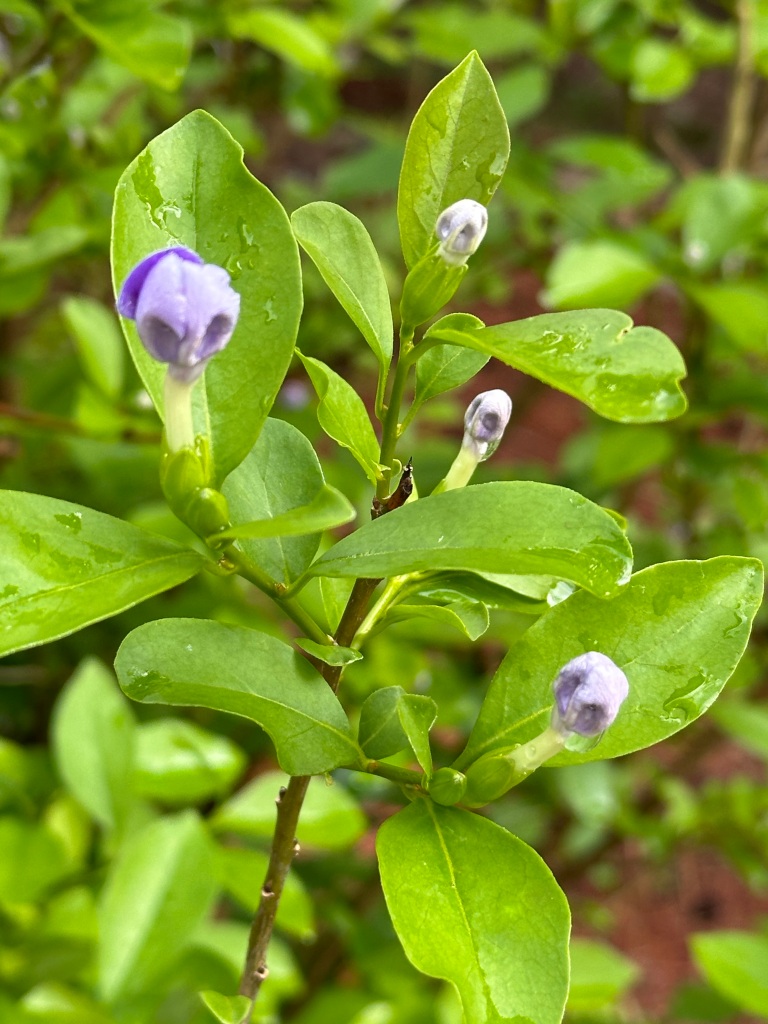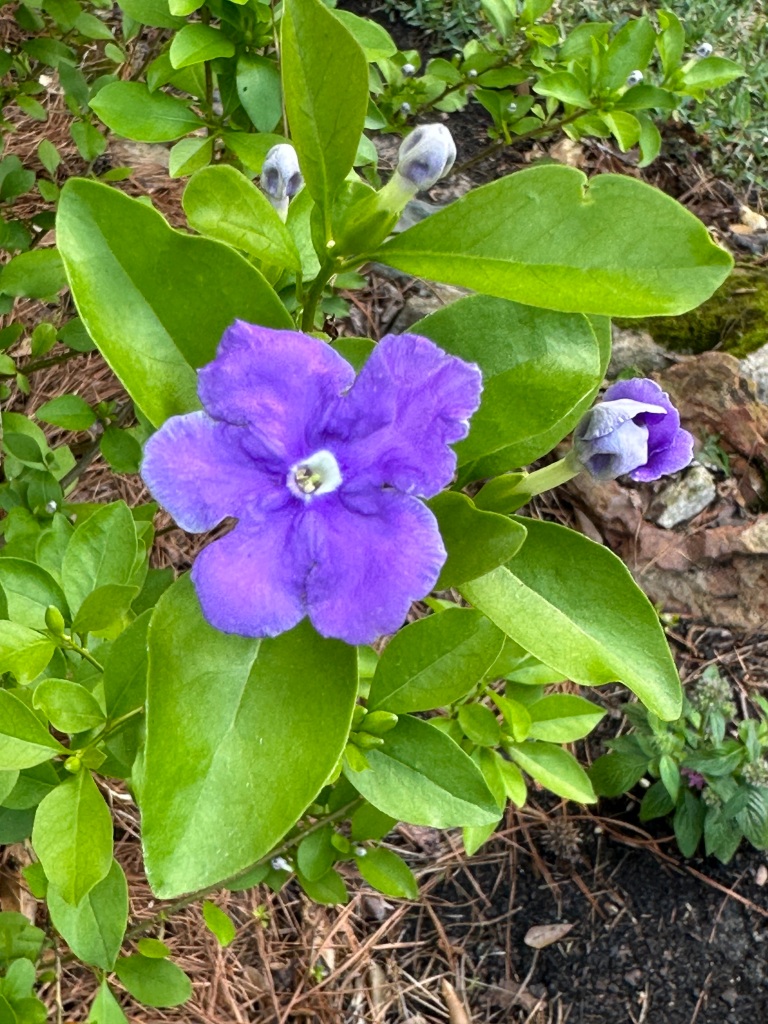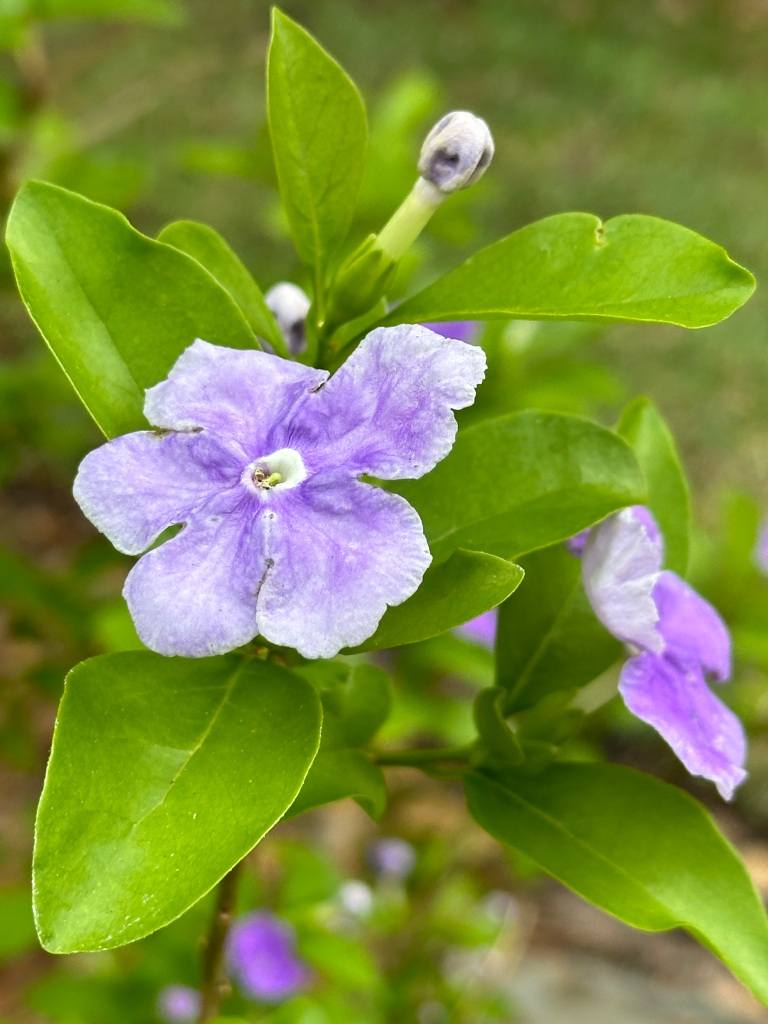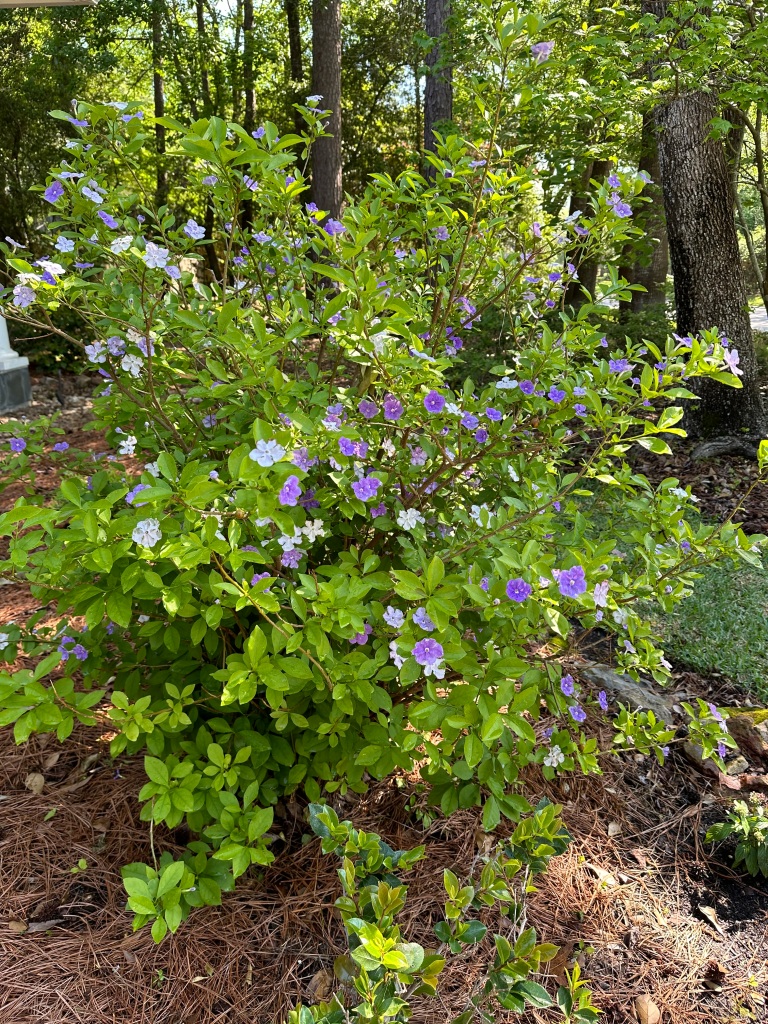Yesterday, Today and Tomorrow
Posted: April 8, 2024 Filed under: Gardening | Tags: Brunfelsia pauciflora, Yesterday Today & Tomorrow 22 Comments
My Yesterday, Today and Tomorrow shrub is blooming. I guess the bud stage is the prequel.

On the first day, it is purple.

The second day it becomes lavendar.

And on the third day, it fades to white.

All together the flowers make an interesting flowering shrub. It is a spring bloomer and its scent is hard to describe, but I feel it is an acquired scent you need to get used to.
The Comeback Shrubs
Posted: June 6, 2021 Filed under: Uncategorized | Tags: Alpinia zerumbet, Anisacanthus quadrifidus, Automatic Gardening, Bottlebrush, Brugmanis, Brunfelsia pauciflora, Callistemon viminalis, Cardboard Palm, Confederate Rose, cycad, Hamelia paten, Hibiscus mutabilis, Hummeringbird Bush, Southern Gardening, Split Leaf Philodendron, Variegated Ginger, Yesterday Today & Tomorrow, Zamia furfurace 20 Comments
I am so thrilled to see my shrubs coming back after our record breaking February freeze. I was heartbroken when I saw so many gone. My blog is a good way to document their comeback and will ease some of my and others’ distress who live in this zone if it happens again. The tallest plant in the above photo is the Angel Trumpet (Brugmanis) and is making good progress. It will be interesting to see how long it will take before it blooms again. It could be one or two years.

Surprisingly, the Bottlebrush (Callistemon viminalis) is coming up from its roots. I have let these shrubs get out of hand and now they can have a new beginning. The Bottlebrushes are a pollinator favorite.

My favorite Confederate Rose (Hibiscus mutabilis) is growing with vigor. The one that I have in my wooded area has not made any new growth. No matter, as I have already started a new plant. The Confederate Rose is easy to root which made it a passalong favorite in the South.

I did not expect my Cardboard Palm (Zamia furfurace) to come back. The plant is incorrectly named and is actually a cycad.

Variegated Ginger is not exactly a shrub, but when planted en masse, it looks very shrubby. The ginger has frozen before and will take another year before it blooms.

The Split Leaf Philodendron has frozen back at least three times. It has a long way to go, but it is trying.

The Yesterday, Today and Tomorrow ( Brunfelsia pauciflora) was completely gone. It came back quickly, but the deer felt it needed a trim. I don’t think it will flower this year.

And the shrub that is the favorite of all pollinators, is the Hummingbird Bush (Hamelia paten). I spent many months filling the sugar water feeders daily to keep hummers, bees and other pollinators alive during our flowerless spring. The Automatic Garden has proved itself and the beds are now full of flowers allowing the nectar loving creatures to feed naturally.
